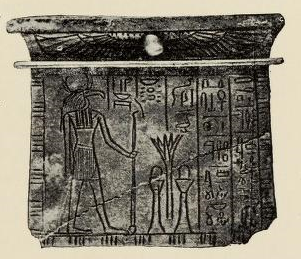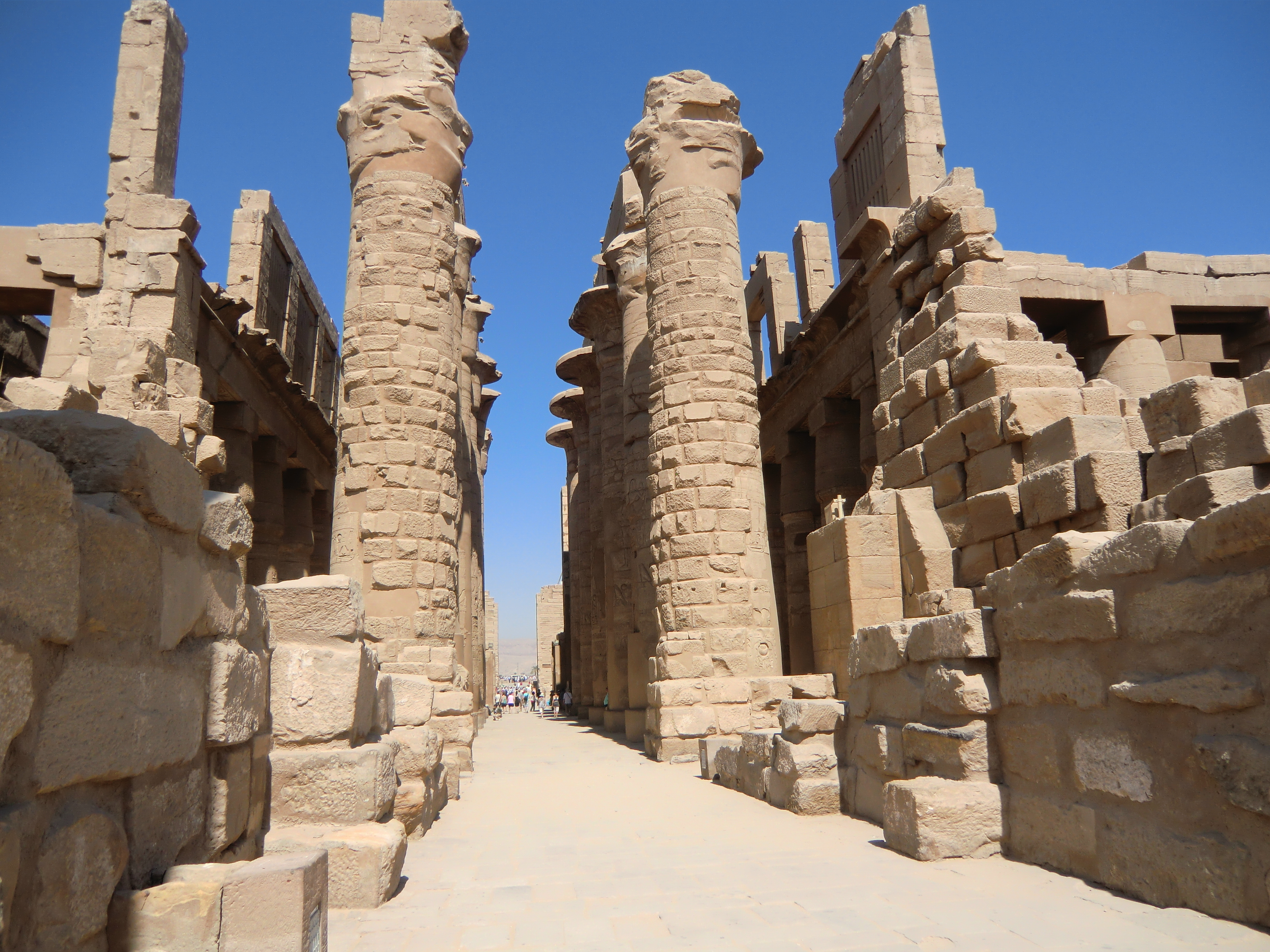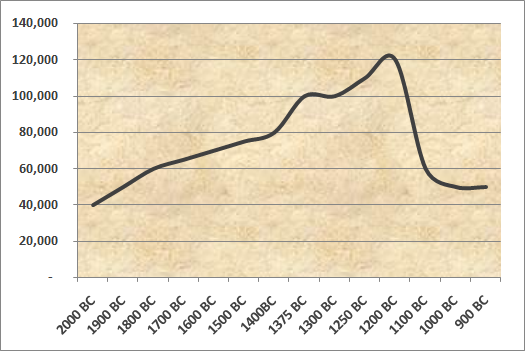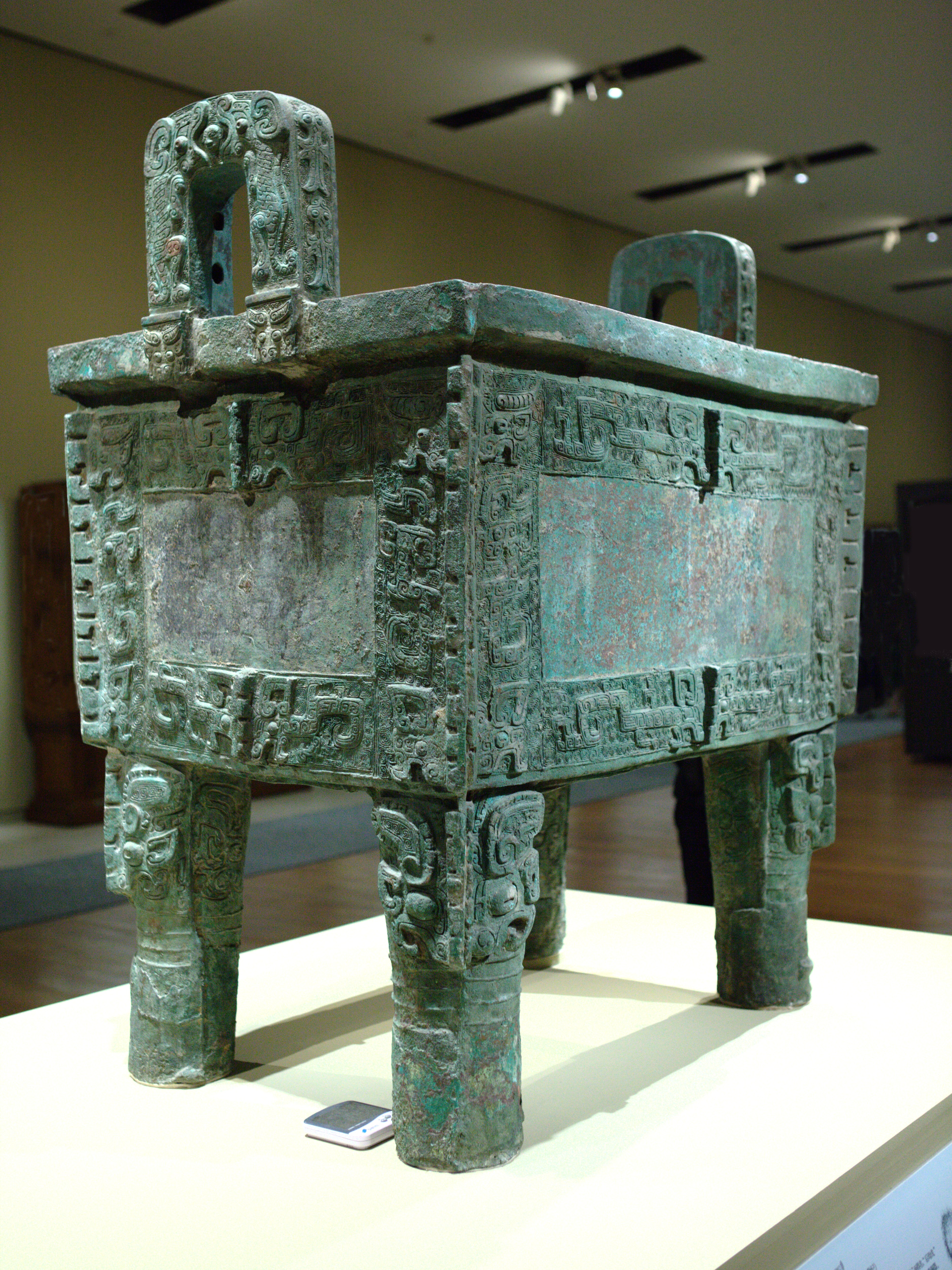|
Smendes III
Smendes III was a High Priest of Amun at Thebes during the reign of pharaoh Takelot I of the 22nd Dynasty. Biography The name ''Smendes'' is a hellenization of the Egyptian name ''Nesbanebdjed'' (''"He of the ram, lord of Mendes"''), while the ordinal number distinguishes him from the founder of the 21st Dynasty Smendes I, and from the earlier, namesake High Priest of Amun, Smendes II. A scarcely attested High Priest, he is mainly known for some Nile Level Texts at Karnak where he is called ''High Priest of Amun'' and ''son of king Osorkon'': No. 17 (dating to a Year 8 of a deliberately omitted king), No. 18 (Year 13 or 14, king omitted) and No. 19 (Year lost, king omitted).Kitchen, op. cit., § 96; 157. Despite the lack of a conclusive record, it is almost certain that the "king Osorkon" father of Smendes III is Osorkon I: if so, Smendes also was the brother of his two predecessors Iuwelot and Shoshenq C and of the contemporary king Takelot I. Relying on the fact that the pr ... [...More Info...] [...Related Items...] OR: [Wikipedia] [Google] [Baidu] |
Iuwelot
Iuwelot or Iuwlot was a High Priest of Amun at Thebes and military commander during the reign of pharaohs Osorkon I (reigned 922–887 BC) and Takelot I (reigned 885–872 BC) of the 22nd Dynasty. Biography As a son of Osorkon I, Iuwelot was brother of his predecessor Shoshenq Q, of his successor Smendes III and of his contemporary king Takelot I. His earliest mention is on the so-called ''Stèle de l'apanage'', from which is known that Iuwelot was a youth in Year 10 of Osorkon I. His name appears later as High Priest of Amun on a Nile Level Text at Karnak (no. 16), dating to a Year 5 of an unknown pharaoh. Scottish Egyptologist Kenneth Kitchen argued that this king could not be Osorkon I, since it would implied that Iuwelot was already ''High Priest'' and ''Army commander of the South'' very early in his life; Kitchen thought it was much more likely that the unnamed pharaoh was Takelot I, and thus that Iuwelot must have been around 40 years old when he was appointed with such ... [...More Info...] [...Related Items...] OR: [Wikipedia] [Google] [Baidu] |
Karnak
The Karnak Temple Complex, commonly known as Karnak (), comprises a vast mix of temples, pylons, chapels, and other buildings near Luxor, Egypt. Construction at the complex began during the reign of Senusret I (reigned 1971–1926 BC) in the Middle Kingdom () and continued into the Ptolemaic Kingdom (305–30 BC), although most of the extant buildings date from the New Kingdom. The area around Karnak was the ancient Egyptian ''Ipet-isut'' ("The Most Selected of Places") and the main place of worship of the 18th Dynastic Theban Triad, with the god Amun as its head. It is part of the monumental city of Thebes, and in 1979 it was added to the UNESCO World Heritage List along with the rest of the city. Karnak gets its name from the nearby, and partly surrounded, modern village of El-Karnak, north of Luxor. Name The original name of the temple was ''Ipet-isut'', meaning "The Most Select of Places". The complex's modern name "Karnak" comes from the nearby village of el-Karnak ... [...More Info...] [...Related Items...] OR: [Wikipedia] [Google] [Baidu] |
People Of The Twenty-second Dynasty Of Egypt
The term "the people" refers to the public or common mass of people of a polity. As such it is a concept of human rights law, international law as well as constitutional law, particularly used for claims of popular sovereignty. In contrast, a people is any plurality of persons considered as a whole. Used in politics and law, the term "a people" refers to the collective or community of an ethnic group or nation. Concepts Legal Chapter One, Article One of the Charter of the United Nations states that "peoples" have the right to self-determination. Though the mere status as peoples and the right to self-determination, as for example in the case of Indigenous peoples (''peoples'', as in all groups of indigenous people, not merely all indigenous persons as in ''indigenous people''), does not automatically provide for independent sovereignty and therefore secession. Indeed, judge Ivor Jennings identified the inherent problems in the right of "peoples" to self-determination, as i ... [...More Info...] [...Related Items...] OR: [Wikipedia] [Google] [Baidu] |
Theban High Priests Of Amun
The High Priest of Amun or First Prophet of Amun (''wikt:ḥm#Egyptian, ḥm wikt:nṯr#Egyptian, nṯr wikt:tpj#Egyptian, tpj n wikt:jmn#Egyptian, jmn'') was the highest-ranking priest in the priesthood of the ancient Egyptian deities, ancient Egyptian god Amun. The first high priests of Amun appear in the New Kingdom of Egypt, at the beginning of the Eighteenth Dynasty of Egypt, Eighteenth Dynasty. History The priesthood of Amun rose in power during the early Eighteenth dynasty through significant tributes to the god Amun by rulers such as Hatshepsut and more importantly Thutmose III. The Amun priesthood in Thebes had four high-ranking priests: * The Chief Prophet of Amun at Karnak (''ḥm nṯr tpj n jmn''), also referred to as the Chief Priest of Amun. * The Second Prophet of Amun at Karnak (''ḥm nṯr snnw n jmn''), also referred to as the Second Priest of Amun. * The Third Prophet of Amun at Karnak (''ḥm nṯr ḫmtnw n jmn khemet-nu''), also referred to as the Third Pri ... [...More Info...] [...Related Items...] OR: [Wikipedia] [Google] [Baidu] |
Thebes, Egypt
Thebes (, , ''Thēbai''), known to the ancient Egyptians as Waset, was an ancient Egyptian city located along the Nile about south of the Mediterranean. Its ruins lie within the modern Egyptian city of Luxor. Thebes was the main city of the fourth Upper Egyptian nome (Sceptre nome) and was the capital of Egypt for long periods during the Middle Kingdom and New Kingdom eras. It was close to Nubia and the Eastern Desert, with its valuable mineral resources and trade routes. It was a religious center and the most venerated city during many periods of ancient Egyptian history. The site of Thebes includes areas on both the eastern bank of the Nile, where the temples of Karnak and Luxor stand and where the city was situated; and the western bank, where a necropolis of large private and royal cemeteries and funerary complexes can be found. In 1979, the ruins of ancient Thebes were classified by UNESCO as a World Heritage Site. Toponymy The Egyptian name for Thebes was ''w� ... [...More Info...] [...Related Items...] OR: [Wikipedia] [Google] [Baidu] |
Harsiese A
King Hedjkheperre Setepenamun Harsiese, or Harsiese A, is viewed by the Egyptologist Kenneth Kitchen in his Third Intermediate Period of Egypt to be both a High Priest of Amun and the son of the High Priest of Amun, Shoshenq Q. The archaeological evidence does suggest that he was indeed Shoshenq Q's son. However, recent published studies by the German Egyptologist Karl Jansen-Winkeln in ''JEA'' 81 (1995) have demonstrated that all the monuments of the first (king) Harsiese show that he was never a High Priest of Amun in his own right. Rather both Harsiese A and his son ..u ..– whose existence is known from inscriptions on the latter's funerary objects at Coptos – are only attested as Ordinary Priests of Amun. Instead, while Harsiese A was certainly an independent king at Thebes during the first decade of Osorkon II's kingship, he was a different person from a second person who was also called Harsiese: Harsiese B. Harsiese B was the genuine High Priest of Amun, who is atte ... [...More Info...] [...Related Items...] OR: [Wikipedia] [Google] [Baidu] |
Kenneth Kitchen
Kenneth Anderson Kitchen (1932 – 6 February 2025) was a British biblical scholar, Ancient Near Eastern historian, and Personal and Brunner Professor Emeritus of Egyptology and honorary research fellow at the School of Archaeology, Classics and Egyptology, University of Liverpool, England. He specialised in the ancient Egyptian Ramesside Period (i.e., Dynasties 19- 20), and the Third Intermediate Period of Egypt, as well as ancient Egyptian chronology, having written over 250 books and journal articles on these and other subjects since the mid-1950s. He has been described by ''The Times'' as "the very architect of Egyptian chronology". Background Kitchen was born in Aberdeen, Scotland in 1932. He died on 6 February 2025 as an unmarried bachelor. Third Intermediate Period His 1972 book is ''The Third Intermediate Period in Egypt (1100–650 BC)''. It noted a hitherto unknown period of coregency between Psusennes I with Amenemope and Osorkon III with Takelot III, and establ ... [...More Info...] [...Related Items...] OR: [Wikipedia] [Google] [Baidu] |
Musée Royal De Mariemont
The Royal Museum of Mariemont () is a museum situated in Mariemont, near Morlanwelz, in Belgium. It is constituted around the personal collection of art and antiquities owned by the industrialist Raoul Warocqué (1870–1917), which were bequeathed to the Belgian state on his death. Museum and collection The museum displays a notable collection of Tournai porcelain and books, as well as antiquities from Ancient Greece, Ancient Egypt, Ancient Rome, Judaism and the Christian Near East, and the Far East. In 2012, the museum was expanded by a bequest of Pre-Columbian art from the collection of Yves and Yolande Boël. Artefacts from archaeological excavations in the Province of Hainaut are also displayed. The original Château Warocqué, in which the museum was housed, was destroyed by fire in 1960. The current museum is housed in a building designed by the architect Roger Bastin, which was opened in 1975. Musée mariemont.JPG, View of the museum building, including the small se ... [...More Info...] [...Related Items...] OR: [Wikipedia] [Google] [Baidu] |
Bronze
Bronze is an alloy consisting primarily of copper, commonly with about 12–12.5% tin and often with the addition of other metals (including aluminium, manganese, nickel, or zinc) and sometimes non-metals (such as phosphorus) or metalloids (such as arsenic or silicon). These additions produce a range of alloys some of which are harder than copper alone or have other useful properties, such as strength, ductility, or machinability. The archaeological period during which bronze was the hardest metal in widespread use is known as the Bronze Age. The beginning of the Bronze Age in western Eurasia is conventionally dated to the mid-4th millennium BCE (~3500 BCE), and to the early 2nd millennium BCE in China; elsewhere it gradually spread across regions. The Bronze Age was followed by the Iron Age, which started about 1300 BCE and reaching most of Eurasia by about 500 BCE, although bronze continued to be much more widely used than it is in modern times. Because historica ... [...More Info...] [...Related Items...] OR: [Wikipedia] [Google] [Baidu] |
Metropolitan Museum Of Art
The Metropolitan Museum of Art, colloquially referred to as the Met, is an Encyclopedic museum, encyclopedic art museum in New York City. By floor area, it is the List of largest museums, third-largest museum in the world and the List of largest art museums, largest art museum in the Americas. With 5.36 million visitors in 2023, it is the List of most-visited museums in the United States, most-visited museum in the United States and the List of most-visited art museums, fifth-most visited art museum in the world. In 2000, its permanent collection had over two million works; it currently lists a total of 1.5 million works. The collection is divided into 17 curatorial departments. The Met Fifth Avenue, The main building at 1000 Fifth Avenue, along the Museum Mile, New York, Museum Mile on the eastern edge of Central Park on Manhattan's Upper East Side, is by area one of the world's list of largest art museums, largest art museums. The first portion of the approximately building ... [...More Info...] [...Related Items...] OR: [Wikipedia] [Google] [Baidu] |
Scribe's Palette
The ancient Egyptian Scribe equipment hieroglyph 𓏞 (Gardiner no. Y3), or its reversed form 𓏟 (Gardiner no. Y4), portrays the equipment of the scribe. Numerous scribes used the hieroglyph in stating their name, either on papyrus documents, but especially on statuary or tomb reliefs. The hieroglyph depicts the 3 major components of a scribe's equipment: # tube case – for holding writing-reeds # leather bag – for holding colored inks (the canonical colors, black and red, mixed with water and gum) # wood ''scribal palette'' – with mixing pools; (not always made from wood) Language usage The scribe equipment hieroglyph is often used as a determinative for items relating to writing or the scribe. Combined with the determinative for person 𓀀 (Gardiner no. A1), the hieroglyph is read as ''zẖꜣw'', probably pronounced �açʀaw'' or �içɫu'' in Old Egyptian, and açʔaw'' or açʔufollowing the changes in pronunciation of ''z'' in Middle Egyptian and o ... [...More Info...] [...Related Items...] OR: [Wikipedia] [Google] [Baidu] |
Journal Of Egyptian Archaeology
The ''Journal of Egyptian Archaeology (JEA)'' is a bi-annual Peer review, peer-reviewed international academic journal published by the Egypt Exploration Society. Covering Egyptology, Egyptological research, the JEA publishes scholarly articles, fieldwork reports, and reviews of books on Egyptology. Articles are mainly published in English, with contributions in German language, German or French language, French accepted where suitable. The JEA was established in 1914 by the Egypt Exploration Society, Egypt Exploration Fund. Its editors have included several prominent Egyptologists, including Alan Gardiner (1916–21, 1934, 1941–46); T. Eric Peet (1923–1934) and Battiscombe Gunn (1935–1939). The current (2021) editor-in-chief is of University College London. (Access date 9 May 2021) References External links * Searchable index of article titles 1914~2022 (use JEA as abbr. for journal) via University of Toronto Academic journals published by learned and profess ... [...More Info...] [...Related Items...] OR: [Wikipedia] [Google] [Baidu] |





